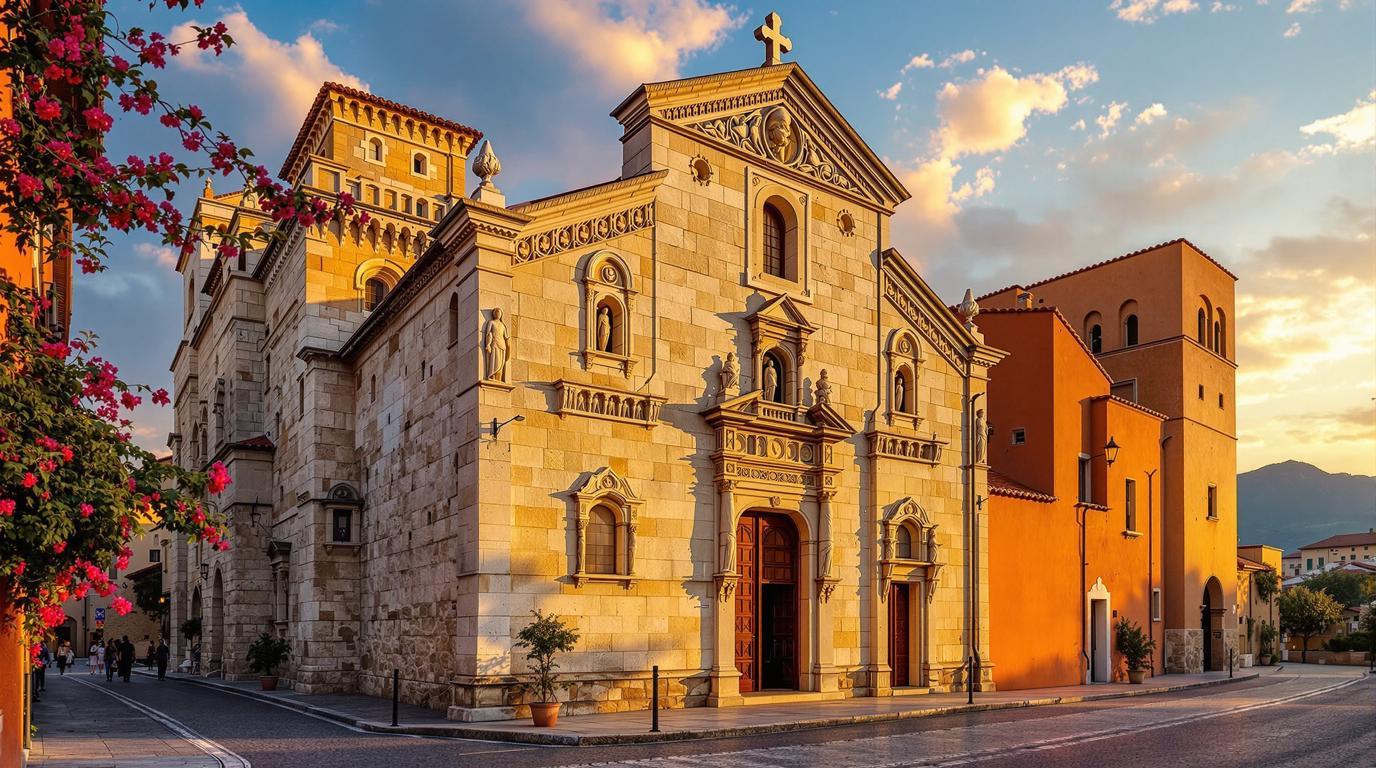Cabestany: The Catalan Secret Beneath Perpignan’s Shadow
A Mediterranean jewel with Romanesque treasures
Just four kilometers south of Perpignan, where the Roussillon plain stretches toward the Mediterranean, lies Cabestany – a town whose Catalan name “Head of the Pond” reveals its historical position at the tip of the now-distant Canet-Saint-Nazaire lagoon. Despite its modest population of 10,000, this sun-drenched commune holds cultural riches that rival destinations ten times its size.
“Our town preserves the beating heart of Catalan culture while remaining refreshingly authentic. Visitors who discover us are always surprised by what they find beneath our unassuming surface,” explains Marie Fontaine, director of Cabestany’s tourism office.
The Master of Cabestany: Medieval genius hiding in plain sight
The town’s crown jewel is undoubtedly the Centre de Sculpture Romane, dedicated to the anonymous 12th-century artist known simply as “The Master of Cabestany.” This mysterious sculptor left his distinctive mark across southern France, Catalonia, and Tuscany, yet his identity remains unknown to this day.
His exaggerated figures with almond-shaped eyes and detailed hair carving created a signature style so distinctive that art historians can identify his work across three countries. The center houses impressive reproductions that tell the story of this medieval artistic genius.
A perfect base for Mediterranean adventures
What makes Cabestany particularly appealing is its strategic location. Within minutes, you can explore perfectly preserved medieval villages in the surrounding countryside, or reach Mediterranean beaches for an afternoon swim.
The nearby Étang de Canet-Saint-Nazaire lagoon offers spectacular birdwatching, with flamingos often spotted during migration seasons. Meanwhile, the dramatic Pic du Canigou mountain provides a snow-capped backdrop to the town’s southern horizon.
Catalan cuisine: Where France meets Spain
Cabestany’s gastronomy reflects its position at the crossroads of French and Catalan culinary traditions. Local restaurants serve dishes you won’t find elsewhere in France – try the “cargolade” (snails grilled over vine cuttings) or the sweet “rousquilles” pastries that pair perfectly with the region’s fortified wines.
“Our cuisine tells the story of our borderland identity,” says Josep Martí, owner of Caveau de Cabestany winery. “We’re technically in France, but our palates and hearts remain deeply Catalan.”
Beyond the town: Day trips to hidden wonders
Cabestany serves as an ideal launching point for exploring the region’s less-discovered treasures. Within an hour’s drive, you can discover medieval villages with multiple castles and churches or venture to the dramatic Fortress of Salses.
Art enthusiasts should visit nearby Collioure, whose vibrant colors inspired Matisse and Derain to create Fauvism. For nature lovers, the Réserve naturelle nationale de Cerbère-Banyuls offers Mediterranean biodiversity unlike anywhere else in France.
Where to stay: Authenticity over luxury
Unlike exclusive island destinations or historic Sicilian villages, Cabestany focuses on authentic experiences rather than luxury accommodations. Family-run guesthouses and small hotels provide comfortable stays with genuine local hospitality.
For those seeking cultural immersion, several wine estates in the area offer rooms among their vineyards, allowing guests to wake up surrounded by the same vines that produce the region’s celebrated wines.
The best time to visit: Autumn’s golden light
While summer brings Mediterranean warmth, September through November offers the perfect blend of pleasant temperatures, reduced crowds, and spectacular light that has drawn artists to this region for centuries. The vineyards turn copper and gold, creating landscapes that rival the most picturesque European destinations.
The annual wine harvest festivals in September provide visitors with opportunities to participate in traditions that have remained largely unchanged for generations.
Cabestany may not command the international recognition of its neighbors, but therein lies its charm. This Catalan commune offers an authentic slice of Mediterranean life where history, art, cuisine, and nature converge in perfect harmony – all waiting to be discovered by travelers willing to look beyond the obvious.
